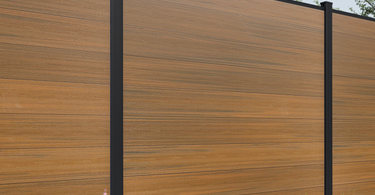The Allure of Round Floral Boxes in Landscape Aesthetics
Understanding the Role of Curves in Garden Design
Round floral boxes bring a unique charm to gardens. They soften harsh lines and create a natural flow. Curves mimic nature's shapes, like flowing rivers or gentle hills. This makes gardens feel more relaxing and inviting.

Round planters can be focal points or guide the eye through the landscape. They work in both formal and informal garden styles. In formal gardens, they add structure and symmetry. In casual gardens, they create a sense of movement and spontaneity.
These circular shapes balance other elements in your garden. They contrast nicely with square or rectangular features. This mix of shapes adds visual interest and depth to your outdoor space. Round boxes can also create a sense of harmony and unity in the overall design.
Balancing Visual Appeal with Functionality
Round floral boxes are not just pretty. They offer practical benefits too. Their shape allows easy access from all sides. This makes planting and maintenance simpler. It's especially helpful for people with limited mobility.
These planters can define spaces within a garden. Use them as borders or dividers between areas. For example, separate a seating area from a vegetable patch. Round boxes also work well for creating height variation. Stack them or use different sizes to add vertical interest.
Consider the material of your round planters. Each type has its own appeal and function. Clay pots have a classic look but can be heavy. Plastic is lightweight and affordable. Metal adds a modern touch but may heat up in the sun.
Innovative Ideas for Round Floral Boxes in Small Spaces
Maximizing Compact Spaces with Multipurpose Planters
In small gardens, round floral boxes are perfect for saving space. They can be both decorative and functional. Here are some creative ways to use them:

- Create vertical gardens by stacking round planters.
- Use tiered plant stands to display multiple small round pots.
- Hang round planters from walls or ceilings to save floor space.
- Place wheeled planters on patios for easy rearranging.
- Use small round boxes as colorful tabletop centerpieces.
These ideas help you grow more in less space. They also add visual interest to your small garden or patio. Round planters can make a compact area feel larger and more open. Their curved edges create a sense of flow in tight spaces.
Strategies for Creating Diverse Planting Ecosystems in Limited Space
Round floral boxes are great for creating mini ecosystems. Their shape allows for layered planting, mimicking natural habitats. Here's how to make the most of this:
- Use the "thriller, filler, spiller" method in each pot.
- Create a miniature pond ecosystem in a water-tight round planter.
- Design a fairy garden with small plants and tiny decorations.
- Plant a butterfly garden with nectar-rich flowers.
- Grow a compact herb garden with different herbs in one large round planter.
These strategies help you create diverse plantings in small round boxes. They turn limited space into a rich, thriving garden ecosystem. Mix plants with different textures, colors, and growth habits. This creates visual interest and supports biodiversity.
Implementing Round Floral Boxes in Large-Scale Gardens
Integrating Round Boxes into Master Plan Garden Designs
In large gardens, round floral boxes can play a key role in the overall design. They create structure and guide movement through the space. Here are some ways to use them:

- Create a series of circular garden rooms connected by paths.
- Use large round planters as statement pieces at key points.
- Design a maze or labyrinth using round boxes as markers.
- Create a sundial feature with a central round planter.
- Use round boxes to soften corners and transitions between areas.
These ideas help break up large spaces and create interest. They give visitors focal points and guide their journey through the landscape. Round planters can also be used to echo other circular elements in the garden. This might include round ponds, circular patios, or arched structures.
Tips for Maintaining and Managing Large Garden Areas
Maintaining a large garden with many round floral boxes can be challenging. Here are some tips to make it easier:
- Group plants with similar needs in the same boxes.
- Use self-watering planters or install an irrigation system.
- Choose low-maintenance plants that suit your climate.
- Use mulch in your planters to retain moisture and reduce weeding.
- Rotate plantings seasonally to keep the garden fresh.
Regular care is key to keeping your garden looking its best. Check your round floral boxes often. Look for signs of pests or nutrient issues. Prune and deadhead plants as needed. This encourages healthy growth and continuous blooming.
Remember to enjoy your garden too. Take time to appreciate the beauty you've created. A well-designed garden with round floral boxes can bring joy for years to come.
